
Table of Contents
Scientific Classification
- Kingdom: Animalia
- Phylum: Chordata
- Class: Reptilia
- Order: Squamata
- Family: Scincidae
- Genus: Tiliqua
- Species: Varies depending on the specific type, e.g., Tiliqua scincoides for the Common Blue-tongued Skink
Quick Overview
The Blue Tongue Skink, easily recognized by its vibrant blue tongue, is a large terrestrial lizard native to Australia, Indonesia, and Papua New Guinea. Their unique appearance and relatively calm disposition make them popular pets among reptile enthusiasts.
Fast Facts
- Scientific Name: “Tiliqua” (species name varies depending on the specific type)
- Lifespan: 15-20 years in captivity
- Average Size: 18-24 inches
- Diet: Omnivorous
- Habitat: Varied environments, from deserts to grasslands and forests
Did you know?
The Blue Tongue Skink uses its bright blue tongue as a defense mechanism. When threatened, it opens its mouth and sticks out its tongue to startle potential predators.
Appearance
Featuring a stout, elongated body with short legs, their most remarkable feature is, of course, the vivid blue tongue set against a mouth with pink insides. Their scales are smooth and overlapping, coming in various colors and patterns, based on the specific subspecies.
Size and Weight
The average adult size for Blue Tongue Skinks ranges between 18 to 24 inches, with a weight of approximately 10-18 ounces, depending on age, diet, and specific species.
Temperament and Behavior
Known for their docile nature, these lizards are usually quite tolerant of handling. They can, however, hiss and open their mouth in defense when threatened.
Fun Fact:
Despite their calm demeanor, they can be quite fast when they need to be, especially if they sense a threat.
Habitat and Distribution
These lizards are adaptable and can be found in various habitats, from deserts to tropical forests. Their distribution spans Australia, Indonesia, and Papua New Guinea.
Care Guide
For those interested in keeping Blue Tongue Skinks:
- A spacious terrarium or enclosure with a basking area.
- Temperatures should range from 70°F night-time to 100°F basking temperature.
- Humidity needs vary based on species, so research is essential.
- They require a varied diet of vegetables, fruits, and proteins.
- UVB lighting is vital for their health.
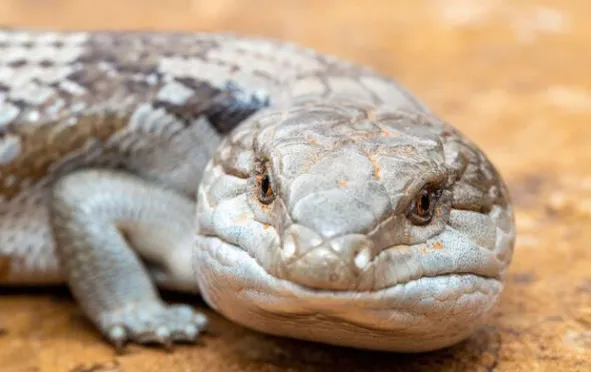
Diet and Nutrition
Being omnivorous, their diet includes a mix of plants and animal matter. They often consume leafy greens, fruits, insects, and occasionally small animals and eggs.
Health and Wellness
Regular check-ups are crucial as they can develop issues like metabolic bone disease if not provided with proper UVB lighting. Additionally, they can suffer from respiratory infections, parasites, and mouth rot if not kept in clean environments.
Breeding
Mating season varies by region, but it generally takes place during spring. Females give birth to live young, usually ranging from 5-20 offspring.
Conservation Status
While many species are not endangered, habitat destruction and the pet trade can pose threats to specific populations.
Fun Fact:
Blue Tongue Skinks are one of the few reptiles that give birth to live young rather than laying eggs.
Photo Gallery
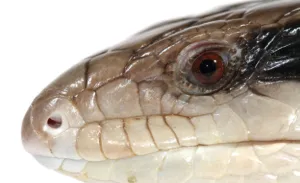
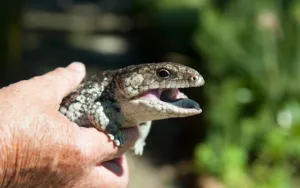
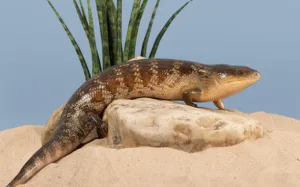
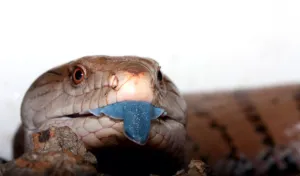
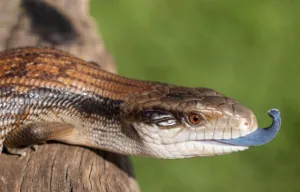
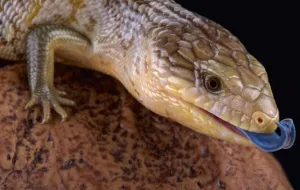
Related Profiles
- Northern Blue Tongue Skink
- Shingleback Skink
Share This Profile:
3 Amazing Facts About Blue Tongue Skink
- Adaptive Eaters: Due to their omnivorous diet, Blue Tongue Skinks are often seen as the “garbage disposals” of the reptile world, eating a wide variety of foods.
- Solitary Creatures: These skinks are typically solitary and might be territorial, especially males during the breeding season.
- Shedding Ritual: When shedding, they often eat their skin, ensuring they leave no trace behind that could attract predators.
- Enchi Ball Python: A Unique and Stunning Morph of Python regius - March 27, 2025
- Emerald Tree Monitor: The Enigmatic Green Guardian of the Rainforest - March 26, 2025
- The Egyptian Cobra (Naja haje): A Fascinating Serpent - March 25, 2025
